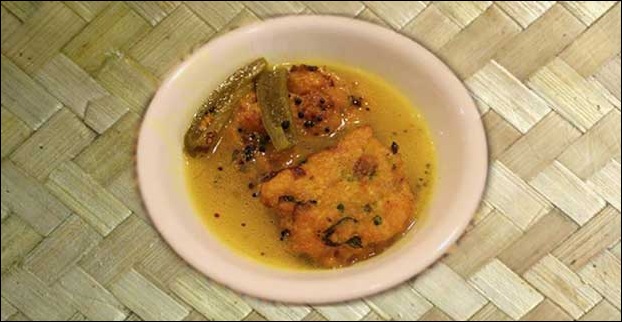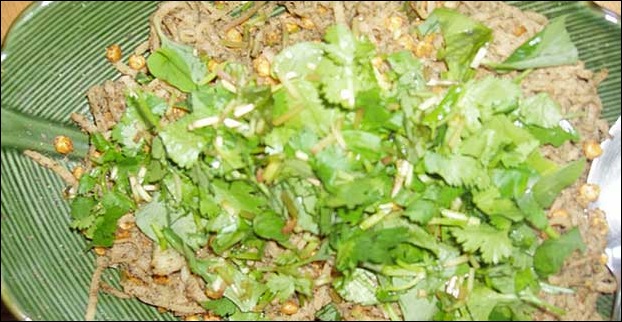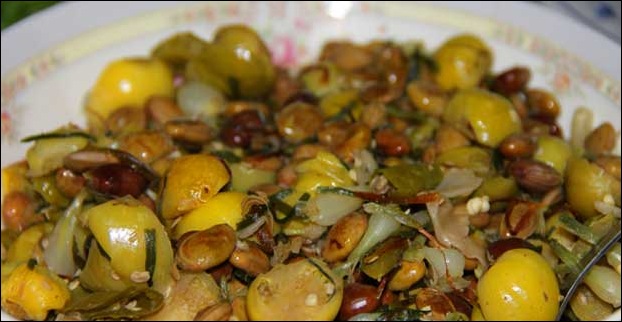
North-East India consists of the seven sisters- Assam, Arunachal Pradesh, Mizoram, Manipur, Meghalaya, Tripura , Nagaland, and the additional state of Sikkim. Each of them is the abode for lush green nature, different tribes, colorful attires, interesting cultures and exotic cuisines. As the states are close to the border of China and Burma (Myanmar), you can see any food-recipes of North-East India follow some similarities with Chinese and Burmese cuisine. Most of them rely on various spices and herbs heavily, and most of them – sundry, steam, boil or grill their ingredients rather than cooking elaborate meals.
The strong North-Eastern tribes like Garo, Khasi, Naga, Boro, Mizo have individual streaks in their language or rituals and highly maintain their sovereignty; but they do share some common grounds in cooking and eating styles.
If you are planning to visit North-East, then don’t forget to partake their food whole-heartedly. You will be amazed to see how little it needs really to whip up some great food- made with dollop of love and care.
But vegetarians should beware of the fact that- most parts of the North-East follow an intensive animal-protein-diet in their daily food. So if you fail to arouse yourself to consume those mouth-watering dishes, then be happy with the desserts, passion fruits or locally-brewed beverages.
Even those who don’t want to consume ‘forbidden meat’ like pork or beef, especially among Hindu communities, gear up to satiate your taste-buds only with fish, chicken or mutton.
Below the gastronomic briefs of three states among the seven, have been stated-
Assam

Rice is the most important food for Assamese, and it’s not wrong if we say that much like Bengal and Odisha, the state of Assam shares the same enthusiasm for rice. Apart from rice, fish is the second-most important food in Assam. Among the various recipes, sour fish or tenga (where fish is prepared with lemon juice or tomatoes) is most popular in every part of the state.
Though a larger part of Assam doesn’t consume beef, it’s popular among tribes and Muslim community. A popular tribal beef dish is Onla which is boiling beef-meat with herbs and ground-rice, and it’s a one pot meal itself.
Lastly, no meal in Assam is complete with its customary desserts in the form of dahi (curd), Pitha (soft, sumptuous rice cake) or Laru (sweet balls made from til, coconut etc.). And don’t forget to finish off your over-all ingestion experience with having some beetle leaves and aerica nuts (supari), as it’s a custom of traditional households in Assam.
Manipur

The most striking point about Manipuri diet is that they use little or no oil and garam masala in their recipes, and still manage to stir up dishes that are remarkably simple, tasty, and wholesome. Most people in Manipur grow their own vegetables and possess smaller –to-larger fish ponds. So rest assured that when you will travel through the state of Manipur, the foods you will get are inadvertently organic.
Instead of garam masala and oil, Manipuri cuisine is rich with herbs and roots. So if you are well-accustomed with food-diet from mainstream India, initially you may feel their ingredients a bit peculiar.
Another specialty of Manipuri cuisine is that they use lots of red chilies or red chili powder or chili peppers in their food, so if you are averse to the usage of so much fieriness in your plate, then tread cautiously.
One of the most popular Manipuri dishes is Eromba– boiled or steamed vegetables with smoked or roasted fermented fish, mashed together with lots of chilies and herbs. Or if you are a health-buff and vegetarian combined into one, then go for Singju salad that is made from- banana stem (chopped), kidney beans, herbs, lotus stem, cabbages etc. Those who love fish, you can partake this dish with fermented fish also.
Finish off your meal with Kabok- a sweet dish made from rice and gur.
Nagaland

There are as many as 16 tribes in Nagaland that are extremely indigenous and independent when it comes to their culture and rituals, but they are quite open when it comes to sharing recipes.
But beware! If firey, spicey food can give you heartburn; don’t rely too much on traditional Naga food while you are touring around the state. Rather opt for the more timid momo, thukpa or noodles.
But if you love to be a little bit daring and experimental with food while your stay in Nagaland- do try out the various smoked, dried, fermented meat and fish preparations with plain boiled (rather bland) vegetables, and various chili sauces as condiments like- crab chili sauce, eel chili sauce (Kongshia Lon) and the hottest of them all- Naga ghost chili sauce. Rather matter-of-factly, Naga ghost chilies are the hottest chilies of the world and you have to be a real brave heart to even wish to try it out.
Apart from chili sauces, bamboo shoot is another main ingredient in Naga cuisine and you can have everything from- pork with dry bamboo shoots, smoked fish with bamboo shoots to salad with bamboo shoots, in Nagaland.
Among veg dishes, Axone is quite popular that is smoked/sundried/fermented soya beans after boiling them properly.
But remember, Nagaland is heaven for people who love their pork in every form- from roasted pork intestines, pork-head based dish Awo-Kutsu, smoked pork stew etc.
Apart from pigs, chicken and fish- dog-meat and insects are other favorite ingredients in Nagaland.
Conclusion
It’s highly unlikely that you would be able to go beyond the surface of enriched Naga cuisine, if you are planning to go there just for few days. But there is no doubt that you will come back with highly satisfied stomachs, only if you are willing to experience new things with an open mind and unbiased approach.

Welcome to MithilaConnect, where we curate the art of living, celebrating the vibrant tapestry of life through culture, fashion, food, and everything in between.
